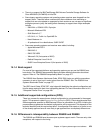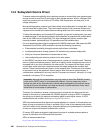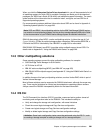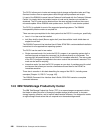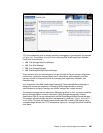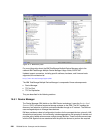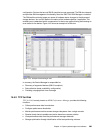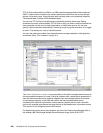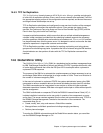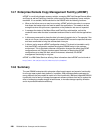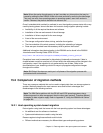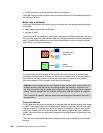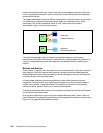Chapter 14. Open systems support and software 287
14.5.3 TPC for Replication
TPC for Replication, formerly known as MDM Replication Manager, provides a single point
of control for all replication activities. Given a set of source volumes to be replicated, it will find
the appropriate targets, perform all the configuration actions required, and ensure the source
and target volume relationships are set up.
TPC for Replication administers and configures the copy services functions of the managed
storage systems and monitors the replication actions. It can manage two types of copy
services: the Continuous Copy, also known as Peer-to-Peer Remote Copy (PPRC) and the
Point-in-time Copy, also known as FlashCopy.
It supports replication sessions, which ensure that data on multiple related heterogeneous
volumes is kept consistent, provided that the underlying hardware supports the necessary
primitive operations. Multiple pairs are handled as a consistent unit,
Freeze-and-Go functions
can be performed when mirroring errors occur. It is designed to control and monitor the data
replication operations in large-scale customer environments.
TPC for Replication provides a user interface for creating, maintaining, and using volume
groups and for scheduling copy tasks. It populates the lists of volumes using the DM interface.
An administrator can also perform all tasks with the TPC for Replication command-line
interface.
14.6 Global Mirror Utility
The DS6000 Global Mirror Utility (GMU) is a standalone tool to provide a management layer
for IBM TotalStorage Global Mirror failover and failback (FO/FB). It provides clients with a set
of twelve basic commands that utilize the DS Open-API to accomplish either a planned or
unplanned FO/FB sequence.
The purpose of the GMU is to automate the complex sequence of steps necessary to set up
and manage Global Mirror relationships for a large number of LUNs. There is no limitation to
the number of volumes managed by GMU.
In the event of a planned or unplanned FO/FB, the system administrator issues a few GMU
commands to recover consistent data on the remote site before he starts host I/O activities.
The GMU commands can be incorporated in user scripts or utilities to further automate
datacenter operations. However, IBM does not support such scripts or utilities without specific
service arrangement.
The GMU is distributed on a separate CD with the DS6000 Licensed Internal Code (LIC). It
includes installation instructions and a user guide. It consists of two components, a server
and a client. The server receives requests from the client and communicates over TCP/IP to
the DS6000 Storage Management Console for the execution of the commands. The
commands allow you to:
Create, modify, start, stop, and resume a Global Mirror session
Manage failover and failback operations including managing consistency
Perform planned outages
To monitor the DS6000 volume status and the Global Mirror session status, you can either
use the DS6000 Storage Manager or CLI.



